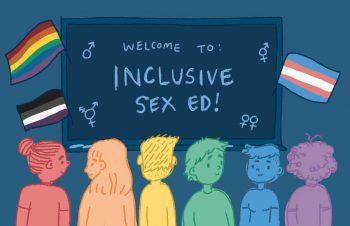Guest writer for Wake Up World
In sixth grade, I liked a girl in my gym class. We weren’t friends, but sometimes I worked up the courage to shyly say hello to her. I thought she was pretty, but that wasn’t exactly it. It was something else.
I had no words for my feelings so I ignored them, and then forgot about them.
If she’d been a boy, I would’ve known immediately: I had a crush. Girls liked boys, as far as I knew. The definition of a crush was that it was on a boy. That’s what my parents told me, what books told me, and what I observed my peers doing at school.
I also knew it from G-rated children’s movies. One study found that children’s movies portray love between men and women as magical, natural, and transformative.
Sixth-grade me felt nothing at all for boys. And sixth-grade me was trying very, very hard to like them because she wanted to fit in.
I’m a late bloomer, I told myself. Everyone else in my grade has hormones surging through their bodies making them interested in the opposite sex, whereas I don’t.
I felt left behind in childhood while my peers had graduated to become pre-teens.
As a sixth grader, I knew that same-sex attraction existed, but it seemed to me kind of like cancer: You know it happens to some people but you never think it could happen to you.
At some point, I saw an article about homosexuality in a teen magazine, and I realized it could happen to me. I adopted a wait and see approach.
I didn’t know about bisexuality, so I had no idea I could like both. I didn’t know that sexual orientation is a spectrum, so even if I was attracted to men a little (and I am), I might still like women more. The moment I first felt anything for a boy, I claimed my identity as a straight woman and didn’t look back for over two decades.
I was 36 years old before I figured out that my feelings for the girl in my gym class were a crush.
I’m not alone here. I’ve met other gay and bisexual women who told themselves that the feelings they had for girls were jealousy — they wanted to look like those girls, not be with them — or came up with other justifications to explain the gay away. Some married men and had children before realizing they were attracted to women.
If you’re straight, giving children age appropriate information about same-sex relationships, or the gender spectrum, may sound unnecessary. But when we educate kids, we must remember that some of them will grow up to be gay, bisexual, or transgender.
Just like straight children need to understand how their bodies are changing, or what their feelings mean, and how to safely navigate coming of age and sexuality, so do LGBTQ children.
And they deserve to see their own possibilities as magical, natural, and transformative, too.
Also by this author:
About the author:
OtherWords columnist is pursuing a Ph.D in sociology at the University of Wisconsin-Madison. She lives in San Diego.
This article distributed by OtherWords.org and licensed under a Creative Commons Attribution-No Derivative 3.0 License.

If you've found value in our articles, we invite you to support the release of our brand-new book, "Gratitude Practices for Kids: A Practical Guide for Adults to Instill a Spirit of Appreciation and Positivity in the Next Generation."
"Gratitude Practices for Kids" brings together over 25 innovative and accessible practices designed to enhance gratitude in everyday life. This comprehensive guide is backed by 17 scientific studies, ensuring each concept is grounded in research, underscoring our commitment to nurturing growth, emotional intelligence, and positive interactions between adults and children.
We encourage you to opt for the paperback version to celebrate this new release. Dive into its fresh pages away from digital distractions, allowing you to immerse yourself in the transformative practices it offers.
Over recent years, Wake Up World has faced significant online censorship, which has impacted our financial ability to operate. Moving into book publishing represents a strategic step to secure the ongoing funds needed to continue our mission. By purchasing Gratitude for Kids, you help us keep our content free and accessible to everyone, avoiding needing a paywall. With over 8,500 articles published in the last 13 years, we remain dedicated to keeping our valuable content open to all.









